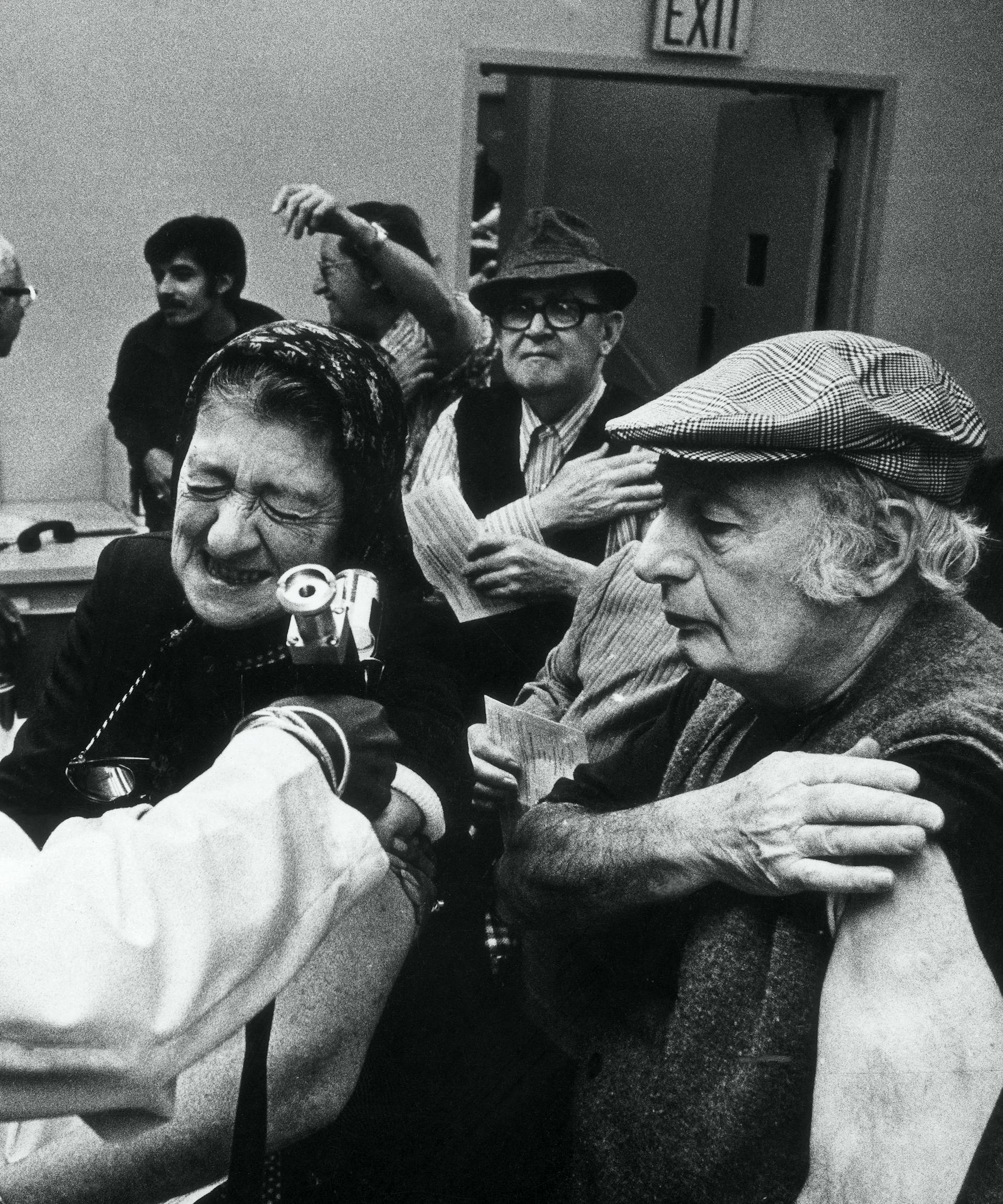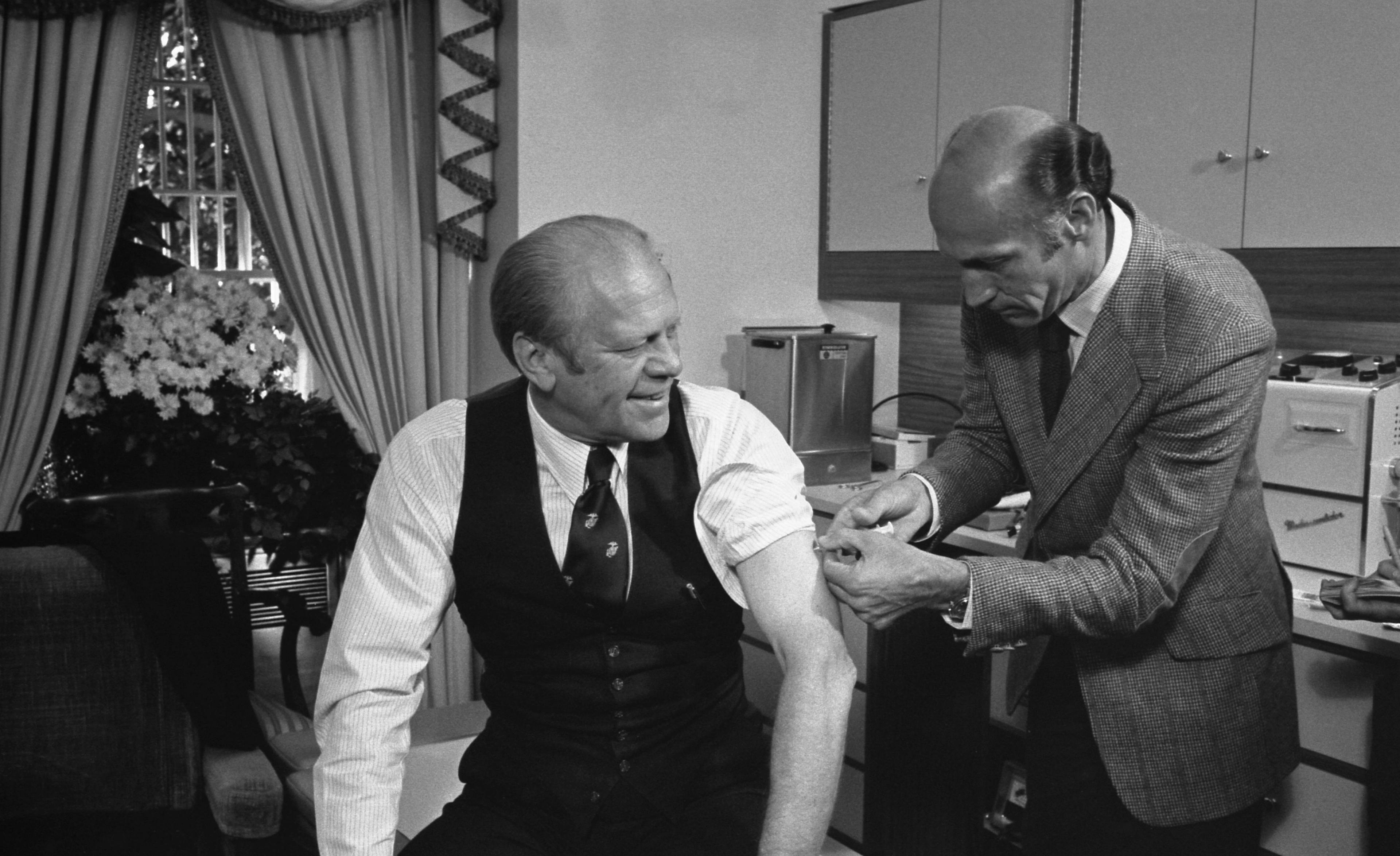1976 Swine Flu Vaccine: Lessons From The Pandemic That Never Happened
In 1976, millions of Americans got vaccinated under President Ford’s administration during a swine flu outbreak – an outbreak that never even happened.

We can agree that in learning about historical events, we can keep future generations from repeating the same mistakes. But what about the forgotten events that the curriculum doesn’t cover? How could we possibly avoid the same mistakes if certain government fiascos aren’t even brought to our consciousness in the first place, almost seemingly on purpose? Indeed, in schools, we’re given a lot of answers, but we’re not encouraged to ask questions that naturally challenge the authority we’re told to listen to. It’s important that we do, though, as the government has a track record of poorly handling situations that involve the public. A great example of such a debacle is the Swine Flu Scare of 1976.
The Mass Vaccination Campaign of 1976
In February of 1976, a soldier named David Lewis at Fort Dix, NJ, reportedly fell ill and died of the flu. Not too long after, the US Secretary of Health, Education and Welfare, F. David Matthews announced that the flu that killed Lewis was a new version of the Spanish flu that killed over half a million Americans in 1918.
What happened after is reminiscent of the events that have taken place during our own coronavirus scare: The CDC campaigned for at least 80% of the population to get vaccinated in order to prevent a pandemic. Thus, the “National Swine Flu Immunization Program” was signed just two months later, on April 15, 1976. President Gerald Ford called for a program of $135 million (that’s about $653 million in 2021) to manufacture and distribute vaccines in America. By that July, Time reported that the vaccine was “only partially successful in clinical trials.”

President Gerald Ford receiving his vaccination on October 14, 1976.
Yet, despite the uncertain effects of the vaccine, celebrities, politicians, and other popular figures advocated for inoculation (or their names were used in pro-vaccine campaigns without their permission, as Mary Tyler Moore claims happened to her). Endless fear-mongering propaganda played on television, and it proved to be very effective. By early October, the vaccination program had begun. And when December rolled around, 45 million Americans had already received their vaccination. But after just a total of 10 weeks, the program came to a halt. Hundreds of individuals started to come forward with their vaccine injuries, and media coverage on these victims started to gain attention.
Victims of the Vaccine
Just in the first week of the vaccine roll-outs, three had reportedly died from heart attacks. The news of vaccine injury headlines increased when more than 500 recipients of the vaccine developed a rare neurological disorder called Guillain-Barré syndrome (GBS), an autoimmune disorder that causes the immune system to attack the nerves.
Judy Roberts, a healthy and active middle-aged woman, received the vaccine, and two weeks later her legs began to go numb. By the next week, she was completely paralyzed. She had to have surgery to repair neurological damage just so she could breathe. She was a quadriplegic for six months, and was then in a wheelchair for a year. After three years, she recovered enough to walk with leg braces, but also suffered from weakness in her hands and reduced mobility in her face (she could no longer whistle or smile fully).
Perhaps the real victims of the 1976 Swine Flu Scare were the individuals who got injured from the vaccine, as it turns out that the “flu” was not even related to the swine flu of 1918 as previously thought. In fact, cases of the swine flu outside of Fort Dix have never even been reported. But the damage had been done, and while some of the injured victims did receive compensation from the government, those who struggled with GBS still experienced paralyzation and no cure.
Interesting Parallels to the Present
I believe even the CDC can agree that there is danger in rushing vaccination programs to the public. Especially when the program has relatively few studies on the biological side effects of certain inoculations. For example, why are studies only coming out now on how Covid-19 vaccines may affect women’s menstrual cycles? Wouldn’t it have made sense to release that information before millions of women received their vaccinations?
“History doesn't repeat itself, but it often rhymes.” – Mark Twain
Another similarity that’s undeniable has been the political drive behind the 1976 Swine Flu and Covid-19 vaccinations. Gerald Ford may have acted hastily per the CDC’s recommendation, but it should come as no surprise that 1976 was an election year (he was running against Jimmy Carter). Ford’s push to get Americans vaccinated is reminiscent of Trump’s Operation Warp Speed and Biden’s vaccination plan – both parties promised to provide Covid-19 vaccinations to the public as soon as possible for political leverage.
Closing Thoughts
Any governing body that’s truly for the people would handle the pandemic in a more calm and helpful fashion. Fear-mongering, in order to rush individuals into getting inoculated, could have harmful effects that could be more damaging to some recipients than the illness itself in the long run. It’s important we look back at certain events and learn from the mistakes that were made to avoid any more people getting hurt.
Love Evie? Let us know what you love and what else you want to see from us in the official Evie reader survey.